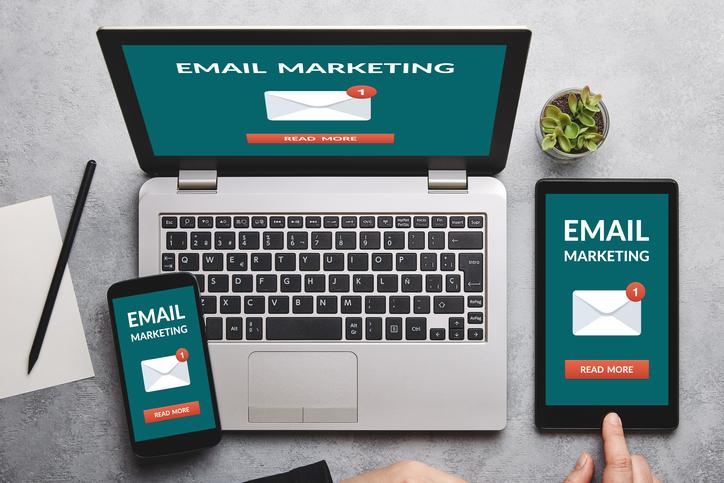In today’s digital age, email marketing remains one of the most effective tools for B2B businesses to engage with potential clients and nurture existing relationships. However, to embark on a successful email marketing journey, you need a robust B2B email marketing list. In this comprehensive guide, we will walk you through the steps to build a high-quality list that will yield impressive results. Whether you’re new to email marketing or looking to enhance your existing strategies, this article has you covered.
1. Leverage Existing Contacts
- Begin with your existing network: Current clients, partners, and industry contacts.
- They are valuable assets: They are familiar with your brand and trust you.
- Reach out to them: Contact them and seek permission to add them to your email list.
- Offer incentives: Sweeten the deal by providing incentives to encourage their subscription.
2. Optimized Sign-Up Forms
- Your website is your digital storefront.
- Potential leads visit your website to learn about your products or services.
- Place well-designed sign-up forms strategically on your website.
- Make the subscription process quick, straightforward, and hassle-free.
3. Networking Events
- Attend industry conferences, trade shows, and webinars.
- Collect business cards and contact information.
- Build personal connections.
- Increase chances of email opt-ins.
4. Content Offerings
- Create valuable content: Whitepapers, eBooks, or webinars.
- Address industry pain points or provide solutions.
- Require email addresses for access.
- Win-win situation: Users get valuable information, and you gain new contacts for your list.
5. Social Media Promotion
- Utilize social media platforms.
- Promote email sign-up.
- Employ targeted ads for lead capture.
- Use compelling visuals and persuasive language.
- Encourage users to subscribe.
6. Careful List Purchasing
- Prefer organic list building.
- Consider purchasing email lists when necessary.
- Exercise caution in choosing sources.
- Ensure compliance with data privacy regulations.
- Avoid legal complications.
7. The Power of a Well-Structured Email List
- Building a comprehensive B2B email list is the initial step.
- Understanding the importance of list segmentation is crucial.
- Segmentation enables highly targeted emails.
- Increases engagement and conversion rates.
8. Segmentation for Targeted Campaigns
- Segmentation categorizes subscribers based on criteria (industry, location, etc.).
- Tailor content to specific segments.
- Send relevant and personalized messages.
- Achieve higher open and click-through rates.
9. Email Verification: A Vital Step
- Maintain list quality.
- Regularly verify email addresses.
- Ensure validity and activity.
- Improves deliverability.
- Avoid being marked as spam.
10. Engaging Content Creation
- Content is the heart of B2B email marketing.
- Craft engaging, informative, and valuable content.
- Address audience’s pain points.
- Use persuasive language.
- Incorporate compelling visuals.
- Capture attention and encourage return engagement.
11. A/B Testing for Optimization
- Employ A/B testing for email improvement.
- Test subject lines, email copy, visuals, and CTAs.
- Determine what resonates best with your audience.
- Embrace a data-driven approach.
- Refine strategies based on testing results.
12. Email Automation: Saving Time and Boosting Engagement
- Email automation is a game-changer in B2B email marketing.
- Send personalized emails at scale.
- Save time and ensure timely communication.
- Set up automated workflows for welcome emails, lead nurturing, and follow-ups.
- Keep your audience engaged throughout their journey.
13. Monitoring and Analytics
- Regularly monitor email campaign performance.
- Utilize analytics tools for tracking.
- Track open rates, click-through rates, conversion rates, and key metrics.
- Use insights for strategy refinement.
- Make data-driven decisions based on performance data.
14. Data Privacy and Compliance
- Prioritize data privacy and compliance.
- Align email marketing practices with GDPR and CCPA.
- Avoid legal repercussions by following regulations.
15. Building Your B2B Email Marketing List – The Ultimate Key to Success
In conclusion, building a high-quality B2B email marketing list is the cornerstone of a successful email marketing strategy. By leveraging existing contacts, optimizing sign-up forms, attending networking events, offering valuable content, and promoting your sign-ups on social media, you can create a robust list of engaged leads. Remember to segment your list, verify email addresses, and focus on creating engaging content. With the right strategies and a commitment to data privacy, your B2B email marketing list will become a valuable asset that drives growth and success for your business.
Frequently Asked Questions
- What is the importance of email list segmentation?
- Email list segmentation allows you to send targeted and personalized emails to specific groups within your list, resulting in higher engagement and conversion rates.
- Why is email verification necessary for my B2B email marketing list?
- Email verification ensures that your list contains valid and active email addresses, improving deliverability and preventing your emails from being marked as spam.
- How can I create engaging content for my email campaigns?
- To create engaging content, focus on addressing your audience’s pain points, use persuasive language, and include compelling visuals that capture their attention.
- What is A/B testing, and why should I use it in my email marketing campaigns?
- A/B testing involves testing different elements of your emails to determine what resonates best with your audience. It helps you optimize your campaigns for better results.
- How can I ensure that my email marketing practices comply with data privacy regulations?
- To ensure compliance, familiarize yourself with relevant regulations like GDPR and CCPA and implement measures to obtain consent, protect data, and offer opt-out options to your subscribers.
Learn More Email Marketing Tips and Tricks!

